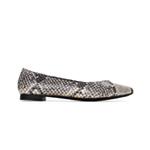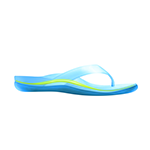WHAT IS PLANTAR FASCIITIS?
Written by Dr. Brian Hoke

What Is Plantar Fasciitis & How is It Treated?
The first rays of sunlight stream through your window as dawn breaks on a new day. You rise from your bed, and as you take your first steps you are greeted by a jolt of pain from your heel and arch. After you move around for about 10 minutes, the pain seems to subside, and you get ready for work. You then sit in the car or train for your morning commute, and everything seems fine. But, when you proceed to get up and try to walk to your office, the heel pain returns. Sound familiar? This is how many people who have developed plantar fasciitis start their days.
What Is Plantar Fasciitis?
The plantar fascia is a tough band of tissue on the bottom of the foot that helps to support our weight and prevent collapse of our arches. There are a number of reasons why this connective tissue breaks down over time, and understanding these causes can lead to a better understanding of how we can fix the problem.
How Is Plantar Fasciitis Caused?
A common problem that places excessive strain on the plantar fascia is tight calf muscles (gastrocnemius). When we sit or sleep with the ankle pointed downward, the calf muscle goes on slack. The shortened muscle gets tight, and when we then try to walk, the ankle joint cannot bend to let our weight move forward over the foot. Instead, the bending occurs in the arch area, placing a great deal of strain on the plantar fascia, and over time, the connective tissue can begin to tear where it attached to the heel bone (calcaneus). Common plantar fasciitis symptoms include pain near the heel and arch as well as inflammation.
Another factor that works against us is the hardness of the surface that we walk on. On a natural surface such as sand at the beach, the surface adapts to the shape of our foot and cushions the impact of each step. When the surface is hard and unforgiving like a city sidewalk, the foot is forced to adapt and absorb the impact forces. When this occurs, the arch flattens and the plantar fascia get stretched out further. This causes further stress on all areas of the foot including the tendon, ligament, and arch. If this is the underlying cause of your pain and inflammation, you may want to consider switching to supportive shoes with added heel cushioning.
Plantar Fasciitis Treatment
When treating plantar fasciitis, we need to address these factors. We can improve the flexibility of the calf muscle by corrective stretching and physical therapy treatment.
To do this stretch:
- Straighten out your knee on the leg you want to stretch.
- Use the strong muscles in the front of your shin to pull the ankle upward as if pulling your “toes to your nose.” You should feel a nice stretch in the back of your lower leg.
- Hold the stretch for 15 seconds (use a watch to time this, because it’s longer than you think).
- Repeat the stretch 5 times for each leg.
You can also combat the hard, flat, unforgiving surfaces by wearing supportive shoes or sandals that are made of shock attenuating material that also matches the natural shape of your foot. This spreads the weight of your body through a larger area and reduces the painful pulling on the plantar fascia. While there are shoes for plantar fasciitis, many shoes made by Vionic incorporate a design that matches the contours of the foot while still maintaining a contemporary style and look. Find both women’s and men’s shoe options for keeping feet supported all day.











